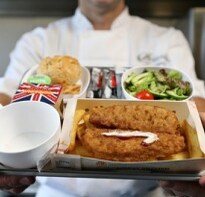Tired of mystery meat or the vegetarian alternative to cake - rubbery melon? Well, from fish and chips to chia seeds with mango, airlines are overhauling their onboard catering. Soon you may be able to upgrade your food along with your seat
Advertisement
Advertisement
Advertisement
For the latest food news, health tips and recipes, like us on Facebook or follow us on Twitter and YouTube.
Advertisement
